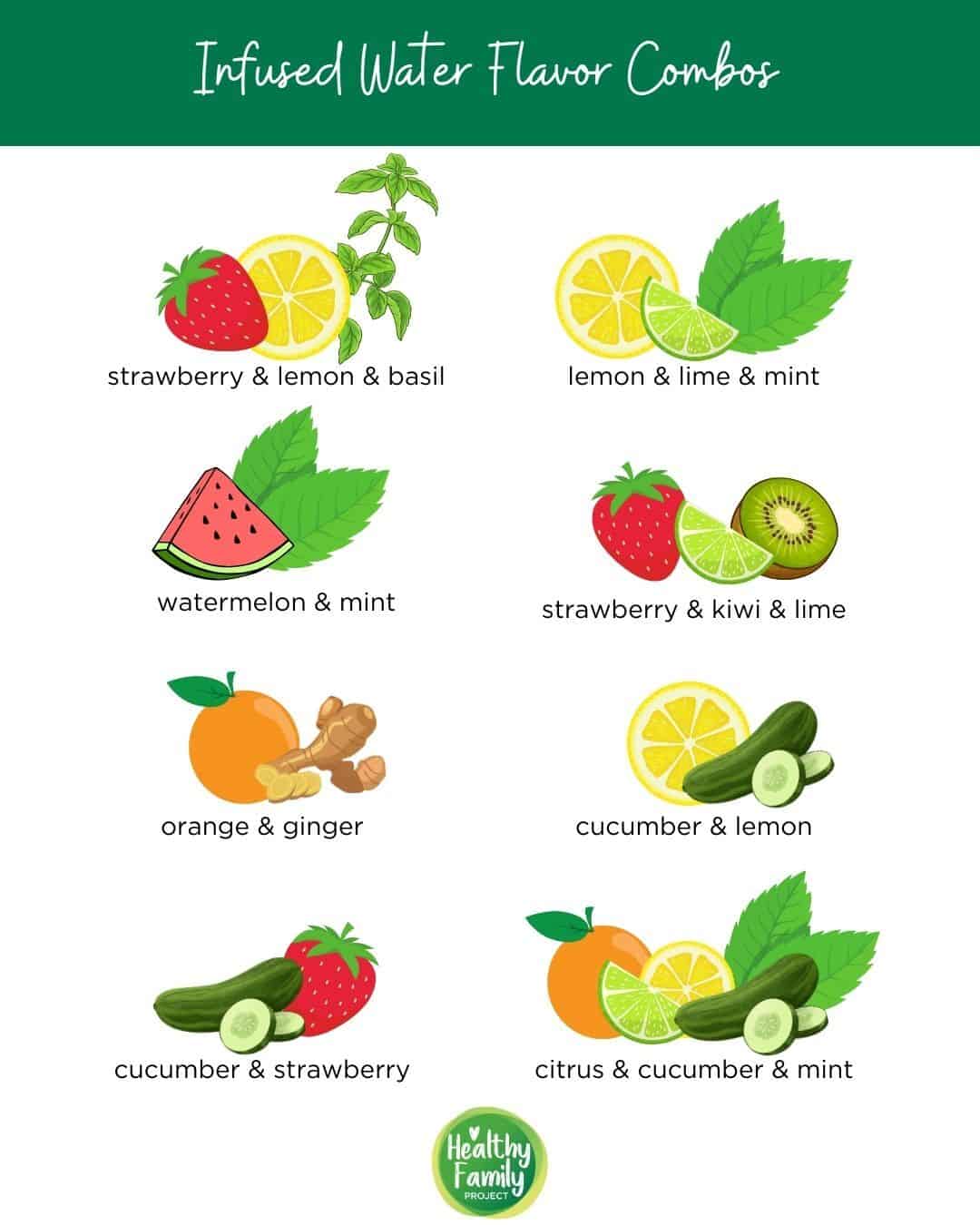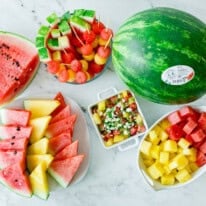Food Rx: All About Hydration
Julie Lopez, registered dietitian and culinary nutrition chef, is discussing all about hydration in this month’s Food Rx. She also shares kid-friendly infused-water recipes to help you and your family stay hydrated.

Staying properly hydrated is one of the most essential things to do for your overall health, along with eating a healthy diet, exercising regularly and getting enough sleep. Because the body cannot store water, we must constantly provide and supply it with water to maintain our body’s many functioning systems. Water is by far one of the body’s most essential nutrients. Water helps maintain blood volume, and it helps lubricate joints and body tissues such as those in the mouth, eyes and nose.
And, water is truly a liquid asset for a healthy weight — it’s sugar-free, caffeine-free and calorie-free.
So why is hydration so important, what are the signs of dehydration, and what are some fun ways to drink more water?
Why is hydration important?
Water is one of the body’s most essential nutrients. Up to 60% of the human body is made up of water. Your body needs it to survive.
Water plays an important role in maintaining all body functions, by regulating body temperature, transports nutrients and oxygen to all cells and carries waste products away, and keeps organs functioning properly.
Now that the weather is hot and we are all having more fun in the sun, we might feel the physical demands more of hydration, but the importance of hydration applies all year round.
What is dehydration?
Dehydration is when you or your child’s body does not have enough water to continue working right. It can keep your child from being as fast and sharp as they usually are by causing headaches, tiredness, lack of concentration, and reduced mental performance, and it can even cause your child to be sick if they have severe dehydration. So make sure you and your child are getting enough water to stay hydrated!

What are the signs of dehydration?
Did you know when you start to feel thirsty you may already be dehydrated?
We all lose some body water throughout the day in our sweat, tears and by going to the bathroom. Water also evaporates from skin and leaves the body as vapor when we breathe. We usually replace this body fluid and the salts it contains through our regular diet.
Sometimes, we lose large amounts of water and salts. This can happen when they have a fever, diarrhea, or vomiting, or through long periods of exercise with lots of sweating.
A simple way to determine if you need to drink more water is to check the color of your urine. The darker your urine is, the more water you need to drink. If your urine is light or has no color, then you are well hydrated.
Signs of dehydration include:
- Fatigue
- Dry mouth, cracked lips
- Headache
- Dizziness
- Few or no tears when crying
- Eyes that look sunken
- Urinating less or fewer wet diapers than usual (for babies)
- Irritability
- Low energy levels, seeming very weak or limp
The goal in treating dehydration is to replace fluids and restore body fluids to normal levels. Kids who are mildly dehydrated from lots of activity will probably be thirsty and should drink water.
Plain water is the best option. They should rest in a cool, shaded spot until the lost fluid has been replaced. If dehydration is caused by an illness, hydration may include beverages that include electrolytes to replenish lost fluids.
Tips to stay hydrated
Water intake doesn’t just come from water alone, but many of the delicious foods we eat are also contributing to your water intake.

Drink Water
- Invest in a reusable water bottle. Bonus if the water bottle can keep your water nice and cool.
- Make it fun! Have your child pick out the color water they like and even decorate with fun stickers!
- Keep it filled up and bring it with you wherever you go!
Infuse Water
Looking to add a pop of flavor to your water? Infuse it with fruits, vegetables and herbs. Play around with different combinations so it never gets boring.
Infused Water Flavor Combinations:

- Strawberry + Lemon + Basil
- Strawberry + Lime
- Orange + Ginger
- Watermelon + Mint
- Citrus + Cucumber + Mint
- Strawberry + Cucumber
- Lemon + Lime + Mint
- Strawberry + Kiwi + Lime
- Pineapple + Mango
- Lemon + Cucumber
- Cantaloupe + Honeydew Melon + Watermelon
Sparkling Waters
Sparkling water hydrates you just as much as regular water. Thus, it contributes to your daily water intake. Aim to choose sparkling water without added sugar or other sweeteners.
Hydrating Foods
There are many foods that can contribute a large amount of water to your diet.
- A 1-cup serving of watermelon contains over a half cup of water, in addition to some fiber and several important nutrients, including vitamin C, vitamin A and magnesium.
- Strawberries have a high water content. About 91% of strawberries’ weight comes from water, eating them will contribute to your daily water intake.
- One cup of cantaloupe is composed of about 90% water and delivers more than a half cup of water per serving.
- Close to 90% of peaches‘ weight is water. They also provide several important vitamins and minerals, such as vitamin A, vitamin C, B vitamins and potassium. All other stone fruit like plums, nectarines, and apricots, are also hydrating.
- One cup of lettuce provides more than a quarter cup of water, in addition to 1 gram of fiber.
- A 1-cup serving of chopped zucchini contains more than 90% water and provides 1 gram of fiber.
- Celery is made mostly of water, providing close to a half cup of it in a 1-cup serving.
- One medium tomato alone provides about a half cup of water. It also provides a significant amount of vitamins and minerals, including immune-boosting vitamins A and C.
- More than 90% of the weight of bell peppers comes from water. They are rich in fiber, vitamins and minerals, such as B vitamins and potassium.

Kids Total Daily Beverage and Drinking Water Requirements
The daily amount of water that a child and adult need depends on factors such as age, weight, gender, and activity level. Air temperature, humidity, and a person’s overall health also affect daily water requirements. As a general rule of thumb, children and teens should drink at least 6 to 8 cups of water every day and consume the recommended amount of fruits and vegetables since they contain higher amounts of water than other foods.

Special attention needs to be given to proper hydration, especially for young athletes. Water, 100% fruit juice and sports drinks are appropriate at an extended competition like a swim or tennis meets. If it’s a short soccer game (less than an hour), keep it to water. Plain and flavored milk are great drink choices during and after a competition. They provide protein for muscle repair and carbohydrate to refuel muscles.
How much water should your kids be consuming? The chart below breaks out recommendations.
Note: These recommendations are set for generally healthy kids living in temperate climates; therefore, they might not be exact for your child or teen.
| Age Range | Gender | Total Water (Cups/Day) |
|---|---|---|
| 4 to 8 years | Male/Female | 7 cups |
| 9 to 13 years | Female | 9 cups |
| Male | 10 cups | |
| 14 to 18 years | Female | 10 cups |
| Male | 14 cups |
The amount of water that your child or teen needs each day might seem like a lot, but keep in mind that the recommendations in the chart are for total water, which includes water from all sources: drinking water, other beverages and food. Notice that fruits and vegetables have a much higher water content than other solid foods. This high-water content helps keep the calorie level of fruits and vegetables low while their nutrient level remains high — another perfectly great reason for kids to eat more from these food groups.

Here are some tips on how to get your child to drink more water:
- Keep the water cold—cold water is more refreshing and warm water may be distasteful.
- Use your child’s favorite cup or a silly, colorful cup as a designated water cup.
- Buy fun ice cube molds that your child can add to their water.
- Be a role model and drink water often and with your child.
- Skip the soda and drink water when you go out to eat, or make homemade fruit “soda” at home by adding a splash of 100% fruit juice to carbonated water.
- Make fruit infused water! It adds color and a little bit of flavor.
- Add berries to your homemade ice cubes that can be added to your child’s water.
- Buy tiny water bottles that your child can hold herself.
We cover all this and more in this month’s Food Rx episode! Have questions about hydration? Comment on this post!
Disclaimer: Before making any health or diet changes, please consult your doctor. The information shared as part of Food Rx is meant to be informative but not replace medical advice from your doctor.














